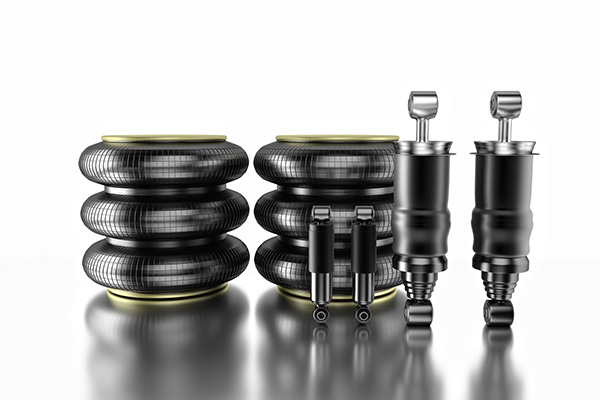
Cold nights and damp air can expose small problems in a Land Rover’s air suspension. You park it level in the evening, then find one corner sitting low by morning. Sometimes it levels itself after startup, other times the dashboard throws a warning. A slow leak or a weak compressor rarely shows up during a short test drive, which is why fall is the perfect time to check the system before winter makes every fault harder to live with.
Why Air Suspensions Sag Overnight in Cooler Weather
Air springs and seals contract slightly when temperatures drop. Any tiny leak that went unnoticed in summer can show up as a slow overnight drop in ride height. Moisture inside the system is another culprit. If the dryer is saturated, water vapor can condense and freeze in lines or valves. That restriction keeps a corner from holding pressure through the night. Battery voltage plays a role as well, since low voltage can limit compressor run time and prevent the control module from correcting a slow leak while parked.
Start With a Visual Check of the Air Springs
Look closely at each air spring. On older bags, the rubber can crack where it folds. With the vehicle safely raised and supported, shine a light along the folds and around the crimped ends. Dampness, dirt stuck to a single spot, or shiny tracks often indicate a seep. If one corner sits lower after an overnight park, swap front wheels side to side and recheck. A wheel or tire issue can sometimes mimic a suspension drop by changing the stance, so rule that out early.
Listen for Leaks and Check Ride Height Sensors
With the engine off in a quiet area, spray a light soap solution on fittings and the bellows. Bubbles that grow slowly show a minor leak. If you hear a faint hiss near a corner or at the valve block, you are close to the source. Next, inspect the ride height sensor links at each control arm. Bent or seized links can send inaccurate readings that cause the module to vent or fill a corner incorrectly. Corroded sensor connectors are common in coastal climates and can create intermittent signals that show up overnight.
Inspect Air Lines, Fittings, and Valve Blocks
Plastic air lines can chafe on brackets and steering components. Follow each line from the spring to the valve block and look for rub marks or kinks. Push to connect fittings should be fully seated and free of cracks. Valve blocks contain tiny O-rings that harden with age. A block that bleeds down internally may not leave obvious external evidence. If the same corner drops regardless of which spring is installed, the block for that axle deserves a closer look. Replacing O-rings and resealing the block is often enough to stop a slow overnight loss.
Compressor Health and Dryer Condition in Fall
A compressor that runs often to mask small leaks wears out early. Check the intake filter for dust and salt, then confirm the dryer is doing its job. A saturated dryer lets moisture pass into the system. In the fall, that moisture condenses at night, which promotes corrosion and valve sticking. Monitor how long the compressor runs from a cold start and after leveling the body. Long run times, unusual noise, or hot odors point to a tired unit. Catching a weak compressor now prevents a no-raise condition on the coldest day of the year.
Software Calibrations, Battery Voltage, and Alignment
Control modules rely on accurate calibration to keep the body level. If suspension work was done without a calibration afterward, the system may chase an incorrect height and vent a corner while parked. Battery and charging health matter too. Low voltage during the night limits corrections and can store faults that look like leaks. Finally, check alignment and bushing health. Excess toe or worn control arm bushings change how the body settles, which can exaggerate the look of a drop and force the system to work harder.
A Simple Fall Checklist to Catch Problems Early
Use this quick list before the first freeze:
- Inspect air springs for cracks, damp spots, and rub marks.
- Soap test fittings, lines, and bellows for slow bubbles.
- Verify ride height sensor links move freely and are not bent.
- Check the compressor intake filter, run time, and dryer condition.
- Confirm battery voltage and perform a suspension calibration if any parts were replaced.
Small leaks are far easier and cheaper to fix in the fall than after winter has stressed every seal.
Keep Your Land Rover Level with Elite Auto Repair in Warwick, RI
If your Land Rover sags overnight or throws suspension warnings, Elite Auto Repair can pinpoint the cause with leak testing, valve block resealing, compressor performance checks, and proper calibration. We will explain what failed, why it happened, and how to prevent repeat issues when temperatures drop.
Schedule a fall suspension inspection today and keep your Rover riding level all winter.